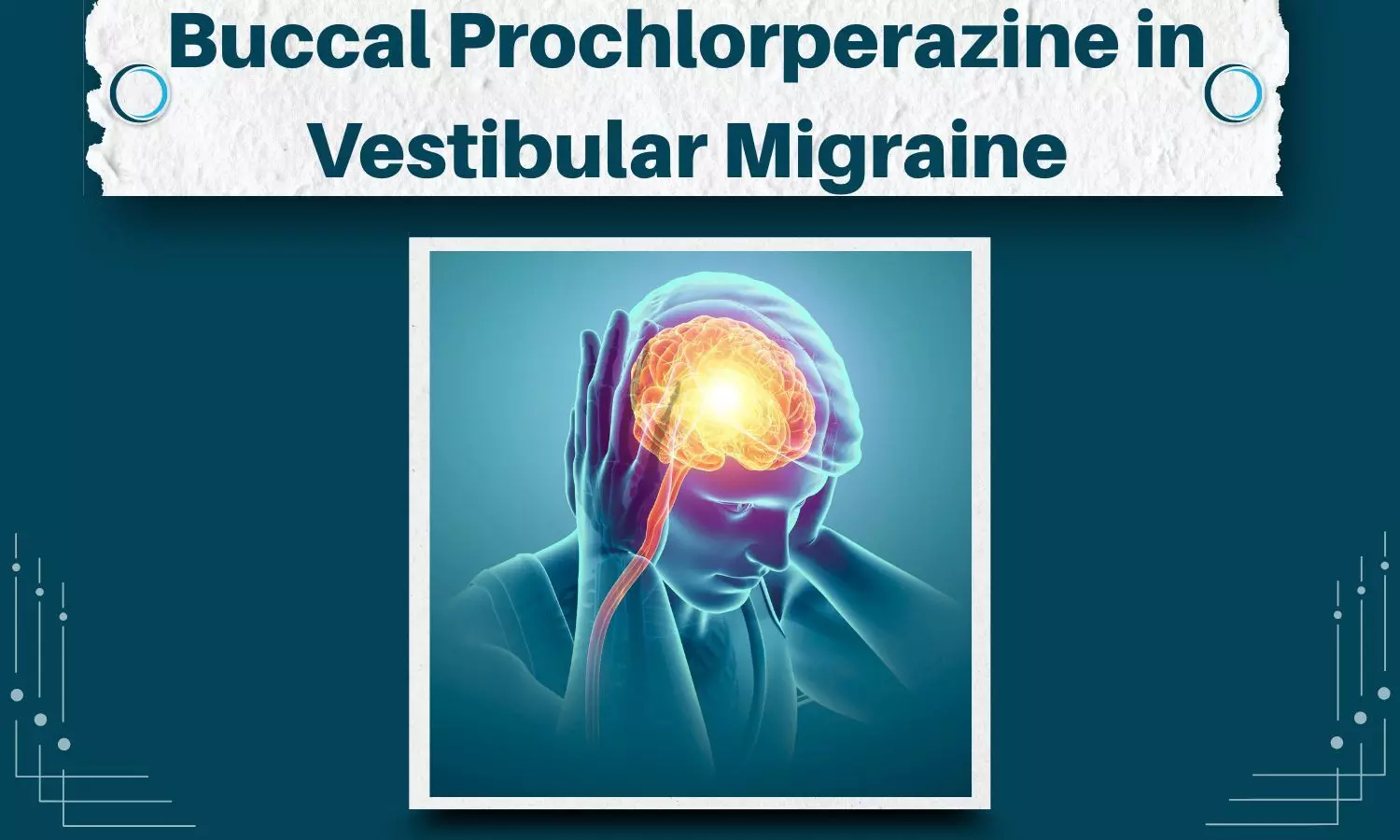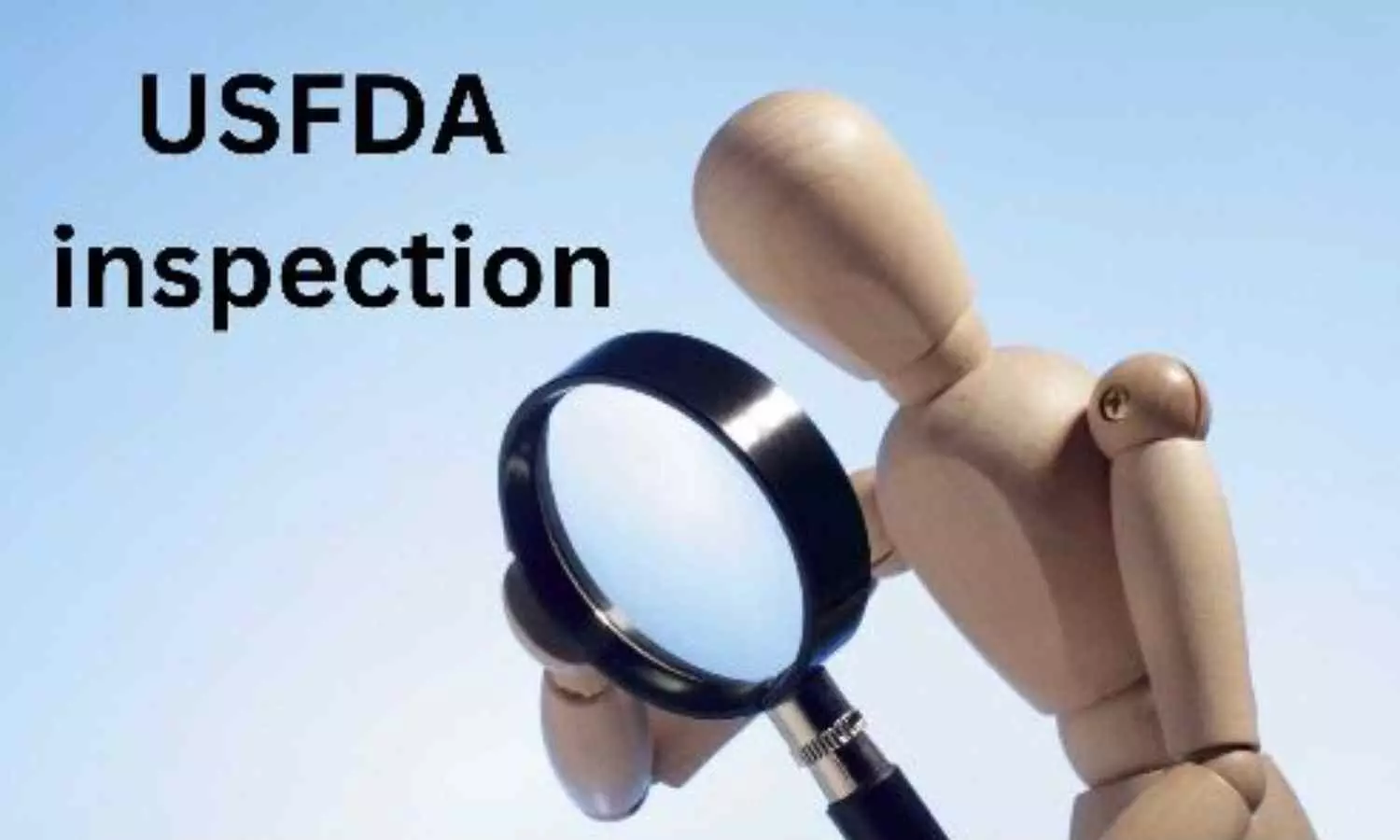Patients, doctors and pharma companies set out plans to improve mental health diagnosis
Powered by WPeMatico
Powered by WPeMatico
Powered by WPeMatico
Powered by WPeMatico
Powered by WPeMatico
Powered by WPeMatico

Vestibular migraine is a leading cause of recurrent spontaneous vertigo, affecting an estimated 1–2.7% of the global population. In India, it remains significantly underdiagnosed, often misattributed to benign paroxysmal positional vertigo (BPPV), Meniere’s disease, or psychogenic dizziness.(1) Recent studies from India reported that up to 30% of patients with recurrent vertigo symptoms may be suffering from vestibular migraine.(2)
Vestibular Migraine: Diagnostic Dilemma
An Indian study including recurrent vertigo patients (n=110) highlighted the diagnostic challenge of overlapping symptoms and inconclusive test findings, such as frequently exhibited post-ictal squinting, low-velocity nystagmus with normal vestibulo-ocular and audiometric findings, emphasizing that vestibular migraine may present with measurable oculomotor disturbances even when standard vestibular testing appears unremarkable.(3)
Vestibular migraine involves complex neurovascular and sensory integration mechanisms, including cortical spreading depression, trigeminovascular activation, altered ion channel dynamics,(4) and vestibular hyperexcitability.(5) Common vestibular migraine triggers—especially relevant in Indian populations—include psychological stress, fasting, sleep disturbances, irregular routines, sedentary lifestyle, and increased screen time.(2)
Vestibular Migraine: How Does It Differ from Other Common Types of Peripheral Vertigo?(6)
Vestibular migraine is marked by recurrent vertigo episodes—spontaneous, positional, or visually/motion-induced—lasting 5 to 72 hours with moderate to severe intensity. These episodes are frequently accompanied by nausea, vomiting, unsteadiness, prostration, and a heightened susceptibility to motion sickness.
Unlike BPPV, which causes brief positional vertigo, vestibular migraine episodes are longer and often present with bilateral low-velocity nystagmus. In contrast to Meniere’s disease, vestibular migraine typically lacks progressive or profound hearing loss and tinnitus.
Per the International Classification of Headache Disorders, 3rd edition (ICHD-3), diagnosis requires at least five episodes of vestibular symptoms (spontaneous, positional, visually- or motion-induced vertigo or dizziness with nausea) and a history of migraine, with or without aura. Additionally, at least 50% of vertigo episodes must be associated with migraine features, such as headache, photophobia, phonophobia, visual aura, and other vestibular disorders must be excluded.
Vestibular Migraine-Treatment Overview: Management of vestibular migraine includes acute agents such as triptans, NSAIDs, and vestibular suppressants. Prochlorperazine is commonly used in acute settings due to its dopamine D2 receptor antagonism, which modulates central vestibular pathways and helps relieve vertigo, headache, and associated nausea.(2)
Prophylactic options include propranolol, flunarizine, amitriptyline, and topiramate, selected based on comorbid profiles. Prochlorperazine remains a clinically valuable option for vestibular-dominant episodes, particularly when motion sensitivity or gastrointestinal symptoms are prominent.(7)
Novel Buccal Prochlorperazine: Emerging Option & Clinical Evidence Recent pharmacokinetic and clinical studies have highlighted the promise of buccal prochlorperazine, particularly in the 3 mg range, as a rapid-acting and well-tolerated alternative to conventional oral or parenteral formulations for the acute management of migraine-associated vertigo and nausea, core symptoms also encountered in vestibular migraine.(8,9)
Buccal Formulation of Prochlorperazine – Pharmacokinetic Edge: A buccal formulation of prochlorperazine (3–6 mg) has demonstrated significantly enhanced systemic bioavailability and reduced interindividual variability compared to the 5 mg oral tablet. In a randomized crossover pharmacokinetic study (Finn et al), the 6 mg buccal tablet showed 2.5-fold greater systemic exposure (AUC₀–∞) and a Cmax nearly twice that of the 5 mg oral tablet, with less than half the variability. Importantly, the relative bioavailability of the buccal route was reported at 241.7%, reflecting a substantial bypass of hepatic first-pass metabolism.(8)
Buccal Formulation of Prochlorperazine Benefits at One Hour in Acute Migraine: In a double-blind, placebo-controlled crossover study involving 45 participants (114 migraine episodes), 3 mg buccal prochlorperazine was compared with oral ergotamine (1 mg) + caffeine (100 mg) and placebo. At 2 hours post-administration, 59.46% of episodes treated with buccal prochlorperazine reported complete symptom relief versus 21.74% to 28.57% in the comparator arms [p≤ 0.05].(7) Onset of relief was observed as early as 15 to 60 minutes, as supported by another clinical evaluation.(10) Additionally, onset of relief was observed as early as 60 minutes in over half of the buccal prochlorperazine group (51.39%, P ≤ 0.001), with concurrent improvement in associated symptoms such as nausea, photophobia, and phonophobia.(7)
Buccal Formulation of Prochlorperazine – Acceptable Safety Profile: The buccal formulation was well tolerated across studies. In a general practice study on dizziness (Ward et al), 3 mg buccal prochlorperazine was favored over the 5 mg oral tablet for tolerability, with fewer sedative side effects and better overall acceptance by patients.(11)
Take Home Messages
References
1. Ilambarathi, M., A. Yeolekar, D. Roy, S. Saxena, and S. Kumar. “A Prospective, Multicenter Study to Evaluate the Effectiveness and Safety of Prochlorperazine in Patients Suffering from Vestibular Migraine”. International Journal of Otorhinolaryngology and Head and Neck Surgery, vol. 10, no. 3, Apr. 2024, pp. 258-64, doi:10.18203/issn.2454-5929.ijohns20240950.
2. M., I., A. Bijlani, and D. Roy. “Vestibular Migraine and Its Management in Indian Clinical Setting: A Narrative Review”. International Journal of Otorhinolaryngology and Head and Neck Surgery, vol. 9, no. 12, Nov. 2023, pp. 1003-10, doi:10.18203/issn.2454-5929.ijohns20233517.
3. Vyas, M et al. “CLINICAL AND OBJECTIVE TEST CHARACTERISTICS OF VESTIBULAR MIGRAINE: IMPLICATIONS FOR DIAGNOSIS AND MANAGEMENT.” Georgian medical news ,340-341 (2023): 284-289.
4. Baloh, Robert W. “Vestibular Migraine I: Mechanisms, Diagnosis, and Clinical Features.” Seminars in neurology vol. 40,1 (2020): 76-82. doi:10.1055/s-0039-3402735
5. Silva, Viviane Passarelli Ramin et al. “Vestibular migraine.” Arquivos de neuro-psiquiatria vol. 80,5 Suppl 1 (2022): 232-237. doi:10.1590/0004-282X-ANP-2022-S111
6. Lempert, Thomas et al. “Vestibular migraine: Diagnostic criteria1.” Journal of vestibular research : equilibrium & orientation vol. 32,1 (2022): 1-6. doi:10.3233/VES-201644
7. Smyth, Duncan et al. “Vestibular migraine treatment: a comprehensive practical review.” Brain : a journal of neurology vol. 145,11 (2022): 3741-3754. doi:10.1093/brain/awac264
8. Sharma S, Sharma R, Kaul DK. Efficacy and Tolerability of Prochlorperazine Buccal Tablets in Treatment of Acute Migraine. Headache. 2002;42(8):747–753.
9. Finn A, Collins J, Voyksner R, Lindley C. Bioavailability and Metabolism of Prochlorperazine Administered via the Buccal and Oral Delivery Route. J Clin Pharmacol. 2005;45(12):1383–1390.
10. Singh S, Sharma DR, Chaudhary A. Evaluation of prochlorperazine buccal tablets (Bukatel) and metoclopramide oral tablets in the treatment of acute emesis. J Indian Med Assoc. 1999 Aug;97(8):346-7. PMID: 10643185.
11. Ward AE. Studies of prochlorperazine as a buccal tablet (Buccastem) and an oral tablet (Stemetil) for the treatment of dizziness, nausea or vomiting in a general practice setting. Br J Clin Pract. 1988;42(6):228–232.
Powered by WPeMatico

Ahmedabad: Dr. Bidyut
Bikash Gogoi, a young doctor from Sivasagar, Assam, survived a horrifying plane crash at BJ Medical College, Ahmedabad, when a London-bound Air India flight AI-171 crashed into the hostel building just minutes after take-off.
Dr. Gogoi, currently pursuing his Doctorate of Medicine (DM) at BJ Medical College and
Hospital, was inside the hostel at the time of the crash. The nose of the
Boeing 787 Dreamliner tore through the building and lodged into the hostel mess
area, killing five resident doctors instantly, including the pregnant wife of a
fellow doctor. Several others were injured in the shocking incident. However,
the doctor, apprehending danger after seeing the smoke, roughly escaped, reports the Daily.
The crash has left the
entire medical and aviation community shaken. Despite the devastating impact
that claimed the lives of all crew members and passengers, one man managed to
survive with only minor injuries, making him the sole survivor of the catastrophe,
among those who were inside the hostel during the tragedy.
Explaining her mental
state, Bidyut’s mother told North East Live, “He heard a loud sound and saw
smoke everywhere. He ran out of the hostel and somehow escaped. Though he
suffered minor injuries, he is now in stable condition. He is safe, and that’s
what matters.” For Dr. Gogoi, survival came down to mere minutes—a narrow
escape that has left him and his colleagues deeply shaken.
Medical
Dialogues team had earlier reported that the Air India Boeing 787 Dreamliner aircraft, which was
bound for London, crashed into the Ahmedabad-based BJ Medical College hostel.
The aircraft reportedly crashed shortly after takeoff from Sardar Vallabhbhai
Patel International Airport in Ahmedabad on Thursday, sending up a massive
plume of black smoke. The reason for the crash is not yet known. Reportedly,
several interns and resident doctors have lost their lives due to the tragic
incident, while many others are injured.
Powered by WPeMatico

Mumbai: Marksans Pharma Limited, an Indian pharmaceutical company, has announced that its wholly owned subsidiary in the UK, Relonchem
Limited, has received marketing authorization for the product Oxybutynin hydrochloride
2.5mg/5ml Oral Solution from UK Medicines & Healthcare Products Regulatory Agency.
This marks the latest in a series of approvals for the company.
At the end of May, Relonchem also secured UK MHRA approval for Metformin Hydrochloride 500mg/5ml Oral Solution, a widely prescribed first-line treatment for type 2 diabetes.
Earlier in May, the company received marketing authorization in UK for Sennosides 7.5 mg Tablets and Gabapentin 50 mg/ml oral solution.
Read also: Marksans Pharma arm Relonchem gets marketing authorization for Sennosides Tablets in UK
In March, the UK MHRA granted approval for Baclofen 10 mg Tablets, a medication used to relax specific muscles in the body, relieving spasms, cramps, and tightness associated with multiple sclerosis or spinal injuries.
Read also: Marksans Pharma arm gets marketing authorization for muscle relaxant tablets in UK
The Medicines and Healthcare products Regulatory Agency regulates medicines, medical devices and blood components for transfusion in the UK.
In February, Relonchem received authorization for Ibuprofen and Paracetamol 200 mg/500 mg Film-coated Tablets (Bell’s Healthcare Dual Action Pain Relief 200 mg/500 mg Film-coated Tablets).
Marksans Pharma Limited, headquartered at Mumbai, India, is
engaged in Research, Manufacturing & Marketing of generic pharmaceutical formulation in
the global markets. The company’s manufacturing facilities located in India, USA and UK are
approved by several leading regulatory agencies including USFDA, UKMHRA and
Australian TGA. The company’s product portfolio spreads over major therapeutic
segments of CVS, CNS, Anti-diabetic, Pain Management, Gastroenterological and Antiallergies. The company is marketing these products globally.
Powered by WPeMatico

Ahmedabad: Zydus Lifesciences has announced that the US Food and Drug Administration (USFDA) has issued two observations for the company’s oncology injectable site situated at SEZ 1, near Matoda, Ahmedabad.
Zydus Lifesciences Ltd. is an innovative, global lifesciences company that discovers, develops, manufactures, and markets a broad range of healthcare therapies. The group employs 27,000 people worldwide, including 1,400 scientists engaged in R & D. Over the last decade, Zydus has introduced several innovative, first-in-class products in the market for treating unmet healthcare needs with vaccines, therapeutics, biologicals and biosimilars.
Read also: Zydus Lifesciences to acquire India, Sri Lanka rights for Agenus cancer immunotherapy BOT/BAL
Powered by WPeMatico

Thane: In a shocking incident straight out of a movie, a 64-year-old man who was declared dead by a laparoscopic surgeon at a private hospital in Ulhasnagar in Thane district suddenly began breathing and woke up just as his family was preparing for his final rites. He was immediately taken to a nearby hospital, where he regained consciousness 30 minutes later.
The surgeon cum owner of the Shivneri Hospital located in Ulhasnagar, Dr Prabhu Ahuja has been issued a show cause notice by the health department of the Ulhasnagar Municipal Corporation (UMC) after taking took suo motu cognizance of the matter on Monday.
In the notice, the doctor has been asked to provide a satisfactory explanation for declaring a living person dead without conducting a proper medical examination. Authorities have stated that if his response is found unsatisfactory, a committee will be formed to investigate the matter. If he is found guilty, his licence can be cancelled.
Also read- Odisha Govt issues show-cause notices to 244 doctors over prolonged absence
It has been reported that the doctor quickly issued a death certificate without bringing the man inside the hospital or conducting a proper medical examination to confirm his death. Believing he had passed away, the family began preparations for his last rites, only to find the man alive and gaining consciousness shortly afterwards.
As per Hindustan Times news report, the incident occurred on Thursday night when Abhiman Girdhar Tayde, who was receiving treatment for jaundice at JJ Hospital in Mumbai, suddenly collapsed at his residence. Alarmed, his son Sachin Tayde and other family members rushed him to Shivneri Hospital in an autorickshaw. There, Dr Ahuja examined him briefly while he was still in the vehicle and pronounced him dead.
Tayade’s family took the ‘body’ home and began preparations for the funeral. However, before the rituals could begin, a relative noticed Tayade’s abdomen moving slightly. The family was shocked to realise he was breathing. They shifted him to Criticare Hospital, where doctors confirmed that Tayade was alive and began treatment. Tayade later regained consciousness within 30 minutes.
Later, Sachin confronted Dr Ahuja, requesting a written death certificate to expose his misdiagnosis. Without hesitation, the doctor issued the certificate, unaware that his patient was, in fact, alive and recovering.
Following the incident, the family did not file a complaint against the doctor, but the UMC took suo motu action and issued a show cause notice to the doctor. The senior citizen is currently out of danger and recovering from jaundice.
When asked about his misdiagnosis, Dr Ahuja admitted his mistake and apologised. He told media persons that when the relatives brought the patient, he saw that he was unconscious and there was no sound coming from his heart or body. At that time, due to the construction work going on nearby, he could not hear properly due to the loud noise, which led to the misdeclaration.
Dr Mohini Dharma, health officer, told TOI, “In this case, we haven’t received any complaint from the Tayde family, but as suo moto, we have served notice to Dr Ahuja asking him to give clarification on the entire issue. If the clarification is not satisfactory, then we will form a committee who will probe the entire case, and as per the findings, further action will be taken.”
Also read- Manipal Hospitals Pune gets show-cause notice for holding body over unpaid bill
Powered by WPeMatico
